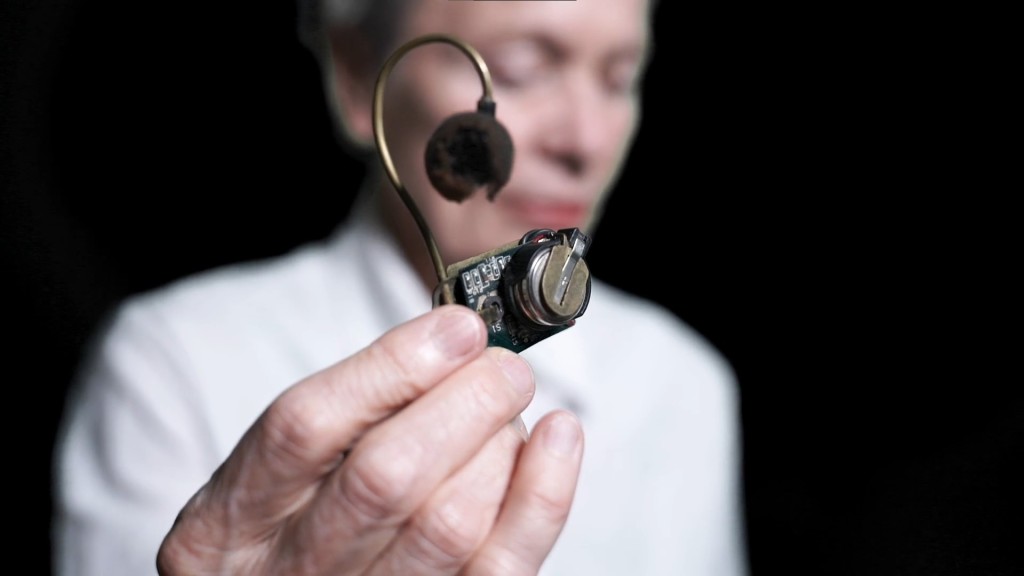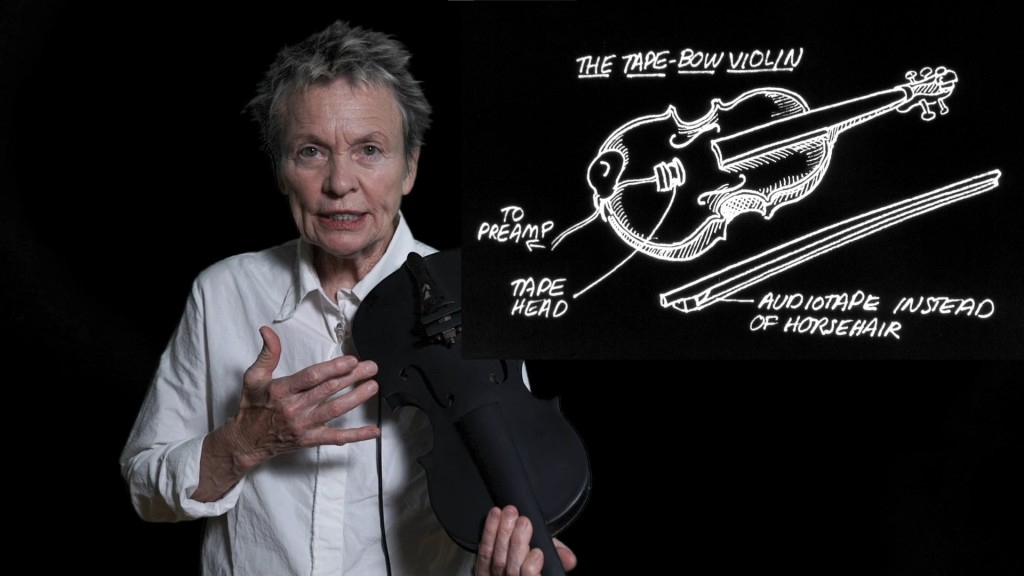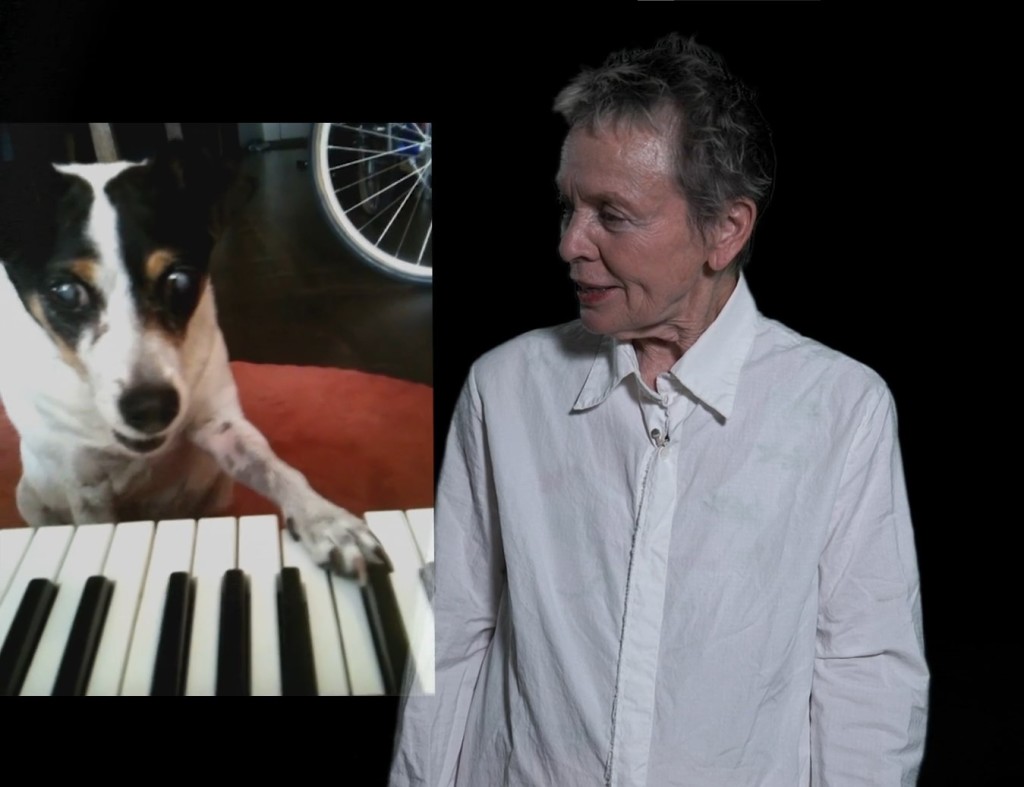A violin can be totally transformed – and the performance with it – from ice skates to neon instruments to ventriloquists’ dummies. Laurie Anderson in this film talks about her many ingenious instrumental inventions.

All the highlights are there, starting with the notion of a piece with no beginning, no end, a looping violin, and playing while ice skating until the ice melts and she falls. (That piece has a poignant story which I won’t spoil…) I must admit, while I knew the tape and phonograph violins best, some of the other stories I find even more inspiring.
It seems a worthy challenge to all of us to reconsider the instruments we play, pause, and imagine how the gestures of playing them and the dialogues we have with the objects as expressive devices might be itself hacked. And that could even be your software or drum machine or what have you – or stepping away and adding other objects.
In the series:


Self-playing violin – Duets on ice.
Tape bow violin – including work with Bob Bielecki and the manipulation of reel-to-reel tape decks at the same time, and It’s Cold Outside.
Viophonograph – made for the Nova Convention for William S. Burroughs.
The Dummy Suzuki – a hybrid of ventriloquist’s dummy and tiny practice instrument.
Neon Violin – United States.
Ned Steinberger violin – used now, also as a digital controller.
Synclavier violin – by none other than Max Mathews… and she sampled a crashing computer, excellent.
DIY Stradivarius bow – unfinished.
The Hologram Bow – United States Live.
The Video Bow, using lipstick cameras.
The Talking Stick – a harpoon-like digital controller for Moby Dick. It’s funny she mentions that watching someone use a laptop is like “watching someone iron,” because one of the first DIY music events we did featured a MIDI iron by Ranjit Bhatnagar, so basically, never say never. Anyway, this is a wonderful granular controller.
Her dog, a blind rat terrier, who learned piano as a kind of therapy after her loss of vision. (Really. The story also doesn’t end there; again, I won’t spoil it but… there is another violin.)

Tilt – built on a carpenters’ level with a sensor.
Wearable instruments, including hearing.
What’s especially compelling here is also that she talks a lot not just about what the instruments themselves do, but how she adapted to the challenges of playing them. I also find it interesting that she adapts a lot of existing objects – my colleague Tad Ermitano who worked on three MusicMakers Hacklabs with us is especially great with this.
If you want still more Laurie Anderson, here you go –
How we made Laurie Anderson’s O Superman (with a byline by Anderson herself, for The Guardian)
A Life of Storytelling:
Plus she and many others are featured in this history of the vocoder for The New Yorker: